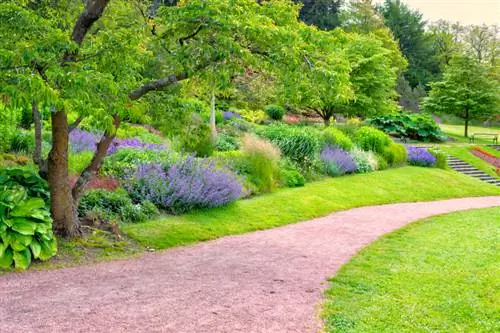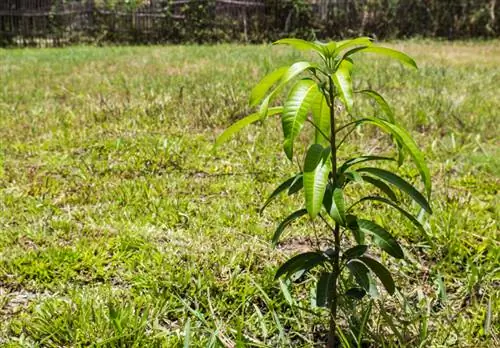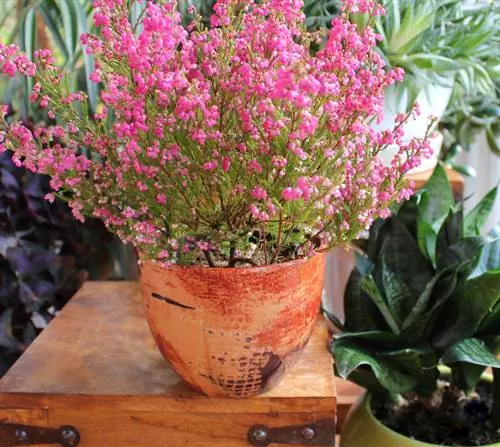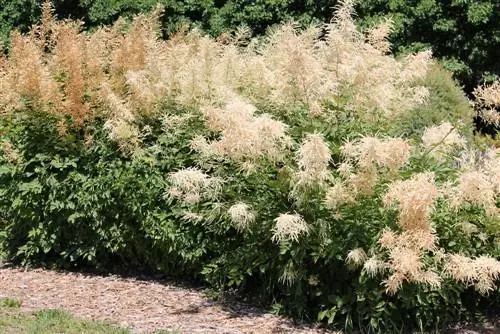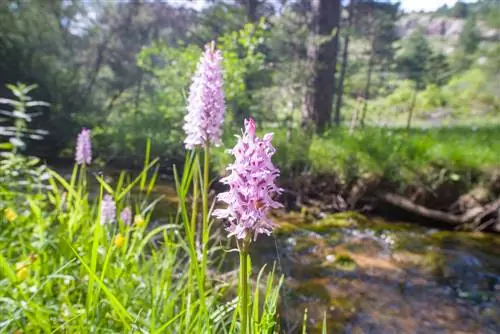- Author admin [email protected].
- Public 2023-12-16 16:46.
- Last modified 2025-01-23 11:20.
Lavender is perfect for the garden for many reasons. Flowers and leaves of the plant can be used for teas, scented sachets or as a spice in the kitchen. Lavender is also a popular food plant for bees, bumblebees and butterflies. Furthermore, the intensely fragrant subshrub keeps pests such as aphids away from neighboring plants - not to mention that the lush and colorfully flowering plants are a real ornament.

Which lavender is suitable for the garden and how do you care for it?
Winter-hardy lavender varieties such as Hidcote Blue, Munstead and Miss Katherine are recommended for the garden. A full sun, protected location with permeable, nutrient-poor soil is ideal. Care includes regular pruning and occasional liming of the soil. Watering and fertilizing are not necessary.
Winter-hardy lavender varieties for the garden
However, not all of the estimated 25 to 30 varieties of lavender can be easily planted in the garden; after all, only the varieties of real lavender are hardy in Germany. In particular, the crested lavender, which is often planted due to its distinctive flower shape, and the spit lavender, which grows quite tall, cannot tolerate frost and should therefore not be left to overwinter outdoors. The following varieties are suitable for planting out and overwintering in the garden due to their relative insensitivity to cold:
- Hidcote Blue
- Munstead
- Miss Katherine (special feature: pink flowers)
The varieties mentioned are exclusively real lavender. Varieties of Lavandin (Lavandula intermedia) are only winter-hardy, but not winter-hardy. These also include such attractive variants as the white-flowering lavender “Edelweiss”, the violet “Grosso” or the light blue “Hidcote Giant”.
The right location for garden lavender
In addition to the right variety, the location must also be right. Lavender needs a full sun, sheltered spot in the garden. You won't be able to enjoy your plants for long in partially shaded or even shady locations. The soil should also be permeable and low in nutrients, which is why lavender thrives excellently in rock gardens or gravel beds. The plant feels most comfortable in a south-facing location, perhaps on a non-shady, warming house wall.
Do roses and lavender go together?
Lavender is often touted as the ideal rose companion, but these two plants fit together visually, but not in terms of their needs. Roses need nutrient-rich, moist soil and must be fertilized regularly - but in these conditions the lavender quickly dies. Therefore, you should at least plant cultivated roses and lavender at some distance and also prepare the soil accordingly for lavender. Things are a little different with wild roses, as they have similar requirements as lavender.
Caring for lavender in the garden
Caring for garden lavender is not complicated. The plant does not need to be watered or fertilized regularly. All that is necessary is regular pruning in spring and, if necessary, summer so that the lavender does not become woody over time. You should also enrich the soil with some lime once a year.
Tips & Tricks
Lady's mantle and cranesbill are particularly suitable companions for cultivated roses. These have similar requirements in terms of location and care and also bloom similarly profusely.

